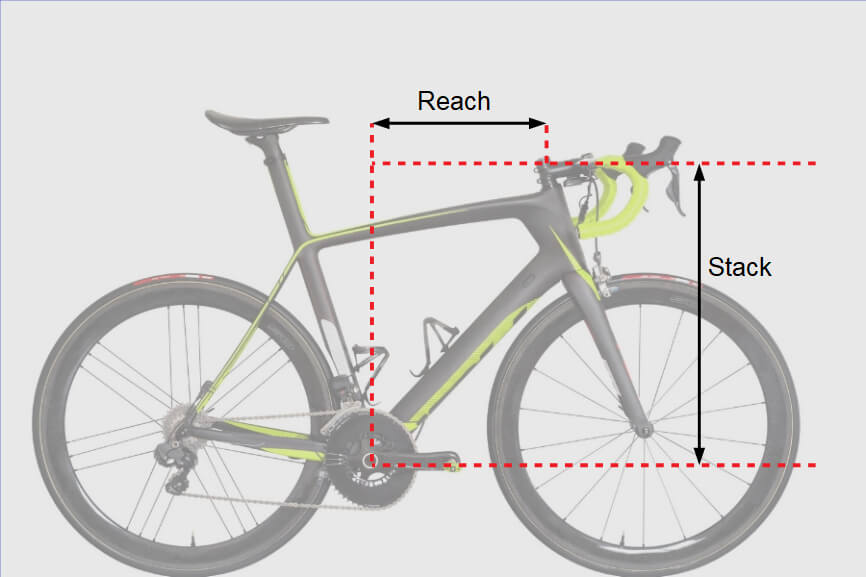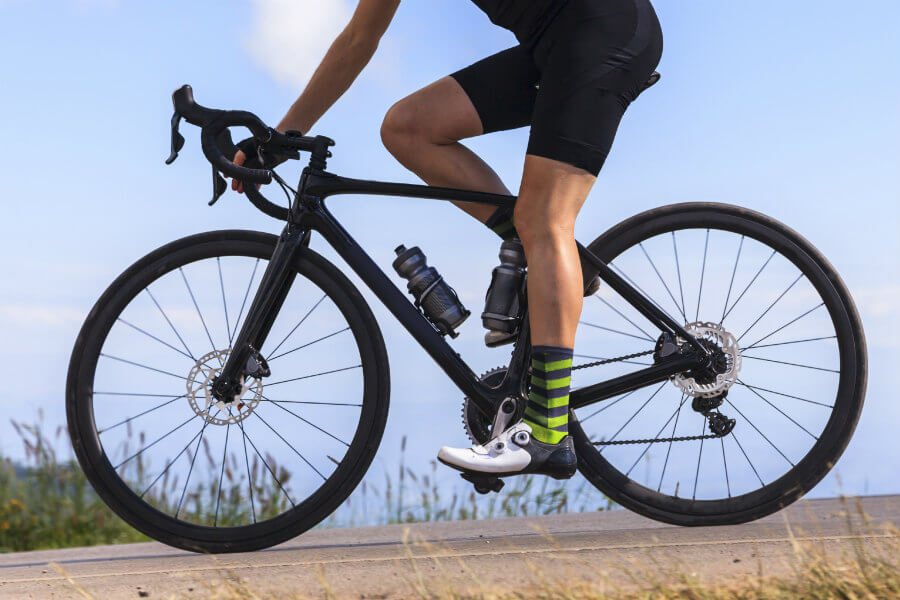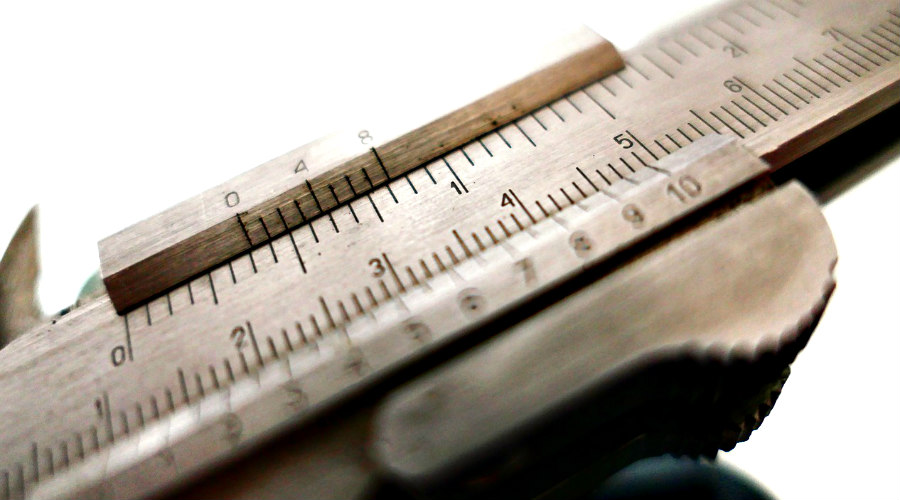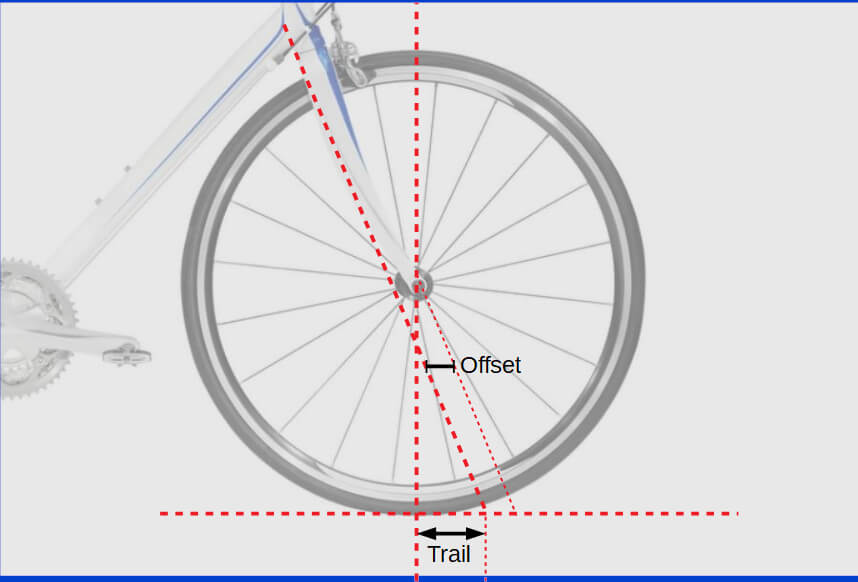The manufacture of bicycles has changed a lot in recent years. Brands no longer produce road and mountain bikes. Within each of these categories there are different modalities and types of use. And that has translated into notable differences in the geometry of the paintings.
That is why the tubes of the two road bicycles of the same brand and size can have different measures, since they are designed for different uses.
The amateur cyclist who comes out every weekend has also been expanding his demands while doing the geometries of the bicycle. When buying it no longer seeks to only seek the bike to be reliable and aesthetically in your liking, but other factors are contemplated.
This is also determined by the fact that even two bicycles of different brands that share the same modality, typology of use and even size - for example two cous country bikes in size m - actually have different dimensions of picture.
It is a phenomenon similar to the one that happens in fashion, where for a t -shirt mark the size M is small while in another brand you look perfect.
It is at this point where the
Stack and the
REACH, two measures that determine the real size of a bicycle and that become a kind of standard measuring bar between different models and typologies of bikes. They are also two very reliable indicators to know our bicycle size.
[IRP posts = "4290" name = "How to correctly measure the Stack and Reach of your Bicycle"]
How the Stack and the REACH

He
REACH - also known as scope- of a bicycle is the horizontal distance parallel to the ground between the vertical from the pedalier axis to the upper part of the steering tube.
He
Stack -Dinded the picture height- is the vertical distance perpendicular to the ground from the horizontal of the pedalier axis to the upper tube of the steering tube.
Both data are independent of the steering angle, the height of the pedalier axis with respect to the soil and the inclination of the chair tube. They are measures that brands usually indicate in technical chips. And they are especially interesting when buying a bicycle because they talk directly to the size that would best adapt to our height and leg length.
>> How to choose the correct bicycle size
Types of bicycle depending on the Stack and the REACH
Depending on how long or short
REACH, and from the top or low that it is the
Stack, we will have a bicycle indicated for a specific type of use or another.
The realization between these two measures determines that the bicycle has a more or less relaxed frame geometry, more or less Racing and more or less thrown. The Stack and the Reach define the bike types, above all on the road. The main ones are:
Endurance or great background
These types of bicycles have a
Stack high and a
REACH short. This is achieved that the cyclist adopts a more relaxed posture while pedaling. In this way we will go with the most upright back and, therefore, more comfortable.
>> See great background bicycles
Racing and Aero
Racing type bicycles are lifelong races. They usually have a
Stack minor and one
REACH. The steering tube is further from the armchair and in a lower position than on the bicycles of great background, so the cyclist will have to pedal more inclined on the bike.
This is not something positive or negative, it is simply a characteristic of these bicycles that are designed to take advantage of each peladada and achieve greater speed and reactivity sacrificing the cyclist's comfort.
If you are accustomed to rolling inclined and you feel comfortable, it is interesting to indicate it to your biomechanical to adapt the data of
Stack and
REACH Recommended for you to your tastes and needs.
Eye! Not everyone can face four hours by pedaling in a Racing posture. That is why before buying a bicycle with this geometry you have to be very clear what kind of routes you are going to do and how long you will pass on it to know if you will adapt to it properly, without discomforts.
>> See Racing type bicycles
Problems derived from a bad choice of Stack and the REACH

Everyone has ever gotten a bike in our eyes and there was no way to forget about it. The process of purchase of a bike can be long and painful, so much when the bike of our dreams seems not to be adequate for us.
If the chosen bike has a
REACH Greater than we need, we possibly have hands of hands of hands (piss at least) and back.
And if on the other hand it is in the
Stack Where we have become shorter or longer, we will have problems in hammets, twins, back, etc.
Of course, choose the size of our new bike depending on the
Stack and the
REACH It is a key point, although for this it is necessary to carry out a biomechanical study.
The importance of a biomechanical study
To calculate your bicycle size you can use the
Tuvalum sizes guide. But in the event that by the combination of your height and your leg length you are between two sizes, it is best to carry out a biomechanical study.
The biomechanical study will help us to know the parameters that fix the most indicated geometry and bicycle size for us. But it will also give us other key data, such as the best position to place the coves, the height of the armchair, the height and inclination of the armchair, etc.
Today biomechanical studies are quite economical. And they also last forever, since our physical measures do not change.
What to do if you are wrong

In the event that you were wrong when buying your bicycle or that
Stack and
REACH They do not get along with your body measures, there are
small modifications that you can make to vary the geometry of the picture In search of a position as compatible as possible with you.
The main measurements you can do to compensate for a
Stack and
REACH inadequate are:
- Move the armchair longitudinally (to compensate for the reach)
- Vary the height of the armchair (to compensate for the Stack)
- Tilt power (to compensate for stack)
- Change the power for another of different length (to compensate for reach)
- Use steering rings (to compensate for stack)
- Other measures are: change the connecting rods for others of different measure, put a wider handlebar, modify the position of the brake handles, etc.
Simply varying the position of the armchair (both in height and with respect to the vertical tube), the power and the handlebar we will notice a change in our posture on the bicycle.
More measures! What are the Trail and the offset?

The geometry of the painting and our comfort above the bicycle do not depend solely on the
Stack and the
REACH. There are more measures that directly influence and that in some cases should be taken into account.
For example, in the Mountain Bike it is increasingly frequent to monitor the
Trail and the
offset, that tell us about whether the bicycle is more climbing, more rolling or more low.
He
Trail It is the distance from the axle of the front wheel with respect to the projection to the floor of the steering tube axis. This measure contributes to the stability of the bicycle when progressing in a straight line. In mountain cycling an enduro bicycle has a greater
Trail than an XC bike to guarantee greater stability and maneuverability in technical land.
He
offset It is the advance of the fork with respect to the axle of the front wheel. Hence, this is also known as progress. That is why some forks are not straight, but have a slight curve. He
offset It serves to increase or reduce the
Trail. To greater
offset minor
Trail and vice versa.
A third measure to be considered in the table geometries is the steering angle, which is measured by the relationship between the steering tube and the horizontal soil.
 He REACH - also known as scope- of a bicycle is the horizontal distance parallel to the ground between the vertical from the pedalier axis to the upper part of the steering tube.
He Stack -Dinded the picture height- is the vertical distance perpendicular to the ground from the horizontal of the pedalier axis to the upper tube of the steering tube.
Both data are independent of the steering angle, the height of the pedalier axis with respect to the soil and the inclination of the chair tube. They are measures that brands usually indicate in technical chips. And they are especially interesting when buying a bicycle because they talk directly to the size that would best adapt to our height and leg length.
>> How to choose the correct bicycle size
He REACH - also known as scope- of a bicycle is the horizontal distance parallel to the ground between the vertical from the pedalier axis to the upper part of the steering tube.
He Stack -Dinded the picture height- is the vertical distance perpendicular to the ground from the horizontal of the pedalier axis to the upper tube of the steering tube.
Both data are independent of the steering angle, the height of the pedalier axis with respect to the soil and the inclination of the chair tube. They are measures that brands usually indicate in technical chips. And they are especially interesting when buying a bicycle because they talk directly to the size that would best adapt to our height and leg length.
>> How to choose the correct bicycle size
 Everyone has ever gotten a bike in our eyes and there was no way to forget about it. The process of purchase of a bike can be long and painful, so much when the bike of our dreams seems not to be adequate for us.
If the chosen bike has a REACH Greater than we need, we possibly have hands of hands of hands (piss at least) and back.
And if on the other hand it is in the Stack Where we have become shorter or longer, we will have problems in hammets, twins, back, etc.
Of course, choose the size of our new bike depending on the Stack and the REACH It is a key point, although for this it is necessary to carry out a biomechanical study.
Everyone has ever gotten a bike in our eyes and there was no way to forget about it. The process of purchase of a bike can be long and painful, so much when the bike of our dreams seems not to be adequate for us.
If the chosen bike has a REACH Greater than we need, we possibly have hands of hands of hands (piss at least) and back.
And if on the other hand it is in the Stack Where we have become shorter or longer, we will have problems in hammets, twins, back, etc.
Of course, choose the size of our new bike depending on the Stack and the REACH It is a key point, although for this it is necessary to carry out a biomechanical study.
 In the event that you were wrong when buying your bicycle or that Stack and REACH They do not get along with your body measures, there are small modifications that you can make to vary the geometry of the picture In search of a position as compatible as possible with you.
The main measurements you can do to compensate for a Stack and REACH inadequate are:
In the event that you were wrong when buying your bicycle or that Stack and REACH They do not get along with your body measures, there are small modifications that you can make to vary the geometry of the picture In search of a position as compatible as possible with you.
The main measurements you can do to compensate for a Stack and REACH inadequate are:
 The geometry of the painting and our comfort above the bicycle do not depend solely on the Stack and the REACH. There are more measures that directly influence and that in some cases should be taken into account.
For example, in the Mountain Bike it is increasingly frequent to monitor the Trail and the offset, that tell us about whether the bicycle is more climbing, more rolling or more low.
He Trail It is the distance from the axle of the front wheel with respect to the projection to the floor of the steering tube axis. This measure contributes to the stability of the bicycle when progressing in a straight line. In mountain cycling an enduro bicycle has a greater Trail than an XC bike to guarantee greater stability and maneuverability in technical land.
He offset It is the advance of the fork with respect to the axle of the front wheel. Hence, this is also known as progress. That is why some forks are not straight, but have a slight curve. He offset It serves to increase or reduce the Trail. To greater offset minor Trail and vice versa.
A third measure to be considered in the table geometries is the steering angle, which is measured by the relationship between the steering tube and the horizontal soil.
The geometry of the painting and our comfort above the bicycle do not depend solely on the Stack and the REACH. There are more measures that directly influence and that in some cases should be taken into account.
For example, in the Mountain Bike it is increasingly frequent to monitor the Trail and the offset, that tell us about whether the bicycle is more climbing, more rolling or more low.
He Trail It is the distance from the axle of the front wheel with respect to the projection to the floor of the steering tube axis. This measure contributes to the stability of the bicycle when progressing in a straight line. In mountain cycling an enduro bicycle has a greater Trail than an XC bike to guarantee greater stability and maneuverability in technical land.
He offset It is the advance of the fork with respect to the axle of the front wheel. Hence, this is also known as progress. That is why some forks are not straight, but have a slight curve. He offset It serves to increase or reduce the Trail. To greater offset minor Trail and vice versa.
A third measure to be considered in the table geometries is the steering angle, which is measured by the relationship between the steering tube and the horizontal soil.












